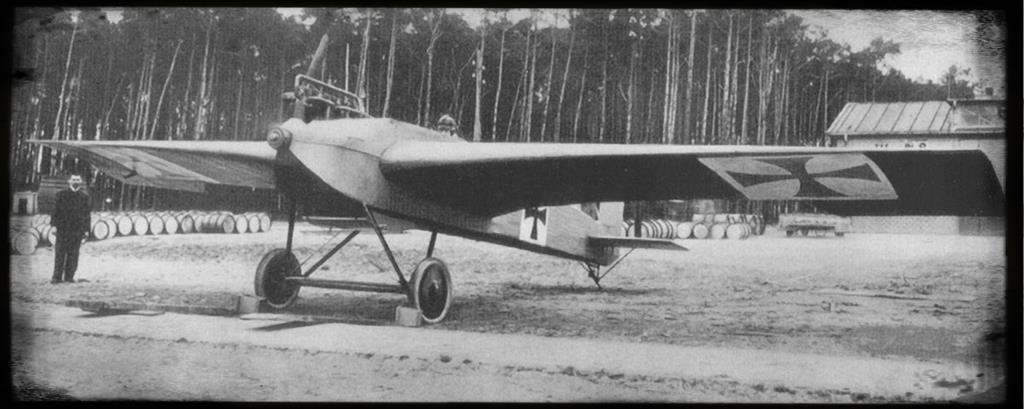Junkers J1 (E.I)
see also: J1 Production List / J1 Survivors / J1 Philatelic Items
Experimental All-Metall Aircraft, First Flight: 12 Dec 1915, one built
built by Junkers + Co. in Dessau

Historical Background:
Following the experiences from the Reissner Ente, Hugo Junkers invested a lot of time into the research of aerodynamical questions, as well as in questions of the utilization of metal constructions for aircraft designs. In spring 1914 Junkers initiated the developement of a first own aircraft at ICO in Dessau. The experimental developements were interrupted by the breakout of WW I in August 1914. The ICO facilities were further utilized for wartime productions, especially front kitchens, etc. But in May 1915 Junkers achieved a test order for the further developement of his all metal aircraft by the German War Ministry, when delegates of this Ministry visited the Dessau ICO plants.
In September 1915 the production of the J1 prototype began at Dessau and at the beginning of December 1915 the first Junkers aircraft was finished. As the ICO facilities at Dessau did not have an airport, the prototype was transported to Doeberitz, where the first flight was performed on December, 12th 1915 by Leutnant Friedrich von Mallinkrodt, who was a member of the German Air Force. Junkers and ICO did not have any test pilots at this time. The J1 was the world's first airworthy internal all-metal monoplane construction. In January 1916 the IDFLIEG (German Airforce) performed several experimental flights with the J1. With 170 km/hrs the J1 is one of the world's fastest aircraft at this time. Due to its all-metal construction the aircraft offered more safety to its pilot especially against gun attacks from the ground, than the conventional textile covered aircraft at this time. The IDFLIEG is satisfied with the experimental flights of 1916. Hugo Junkers had proofed the possibilities of an all-metal aircraft construction. Nevertheless the J1 showed bad performances during climb phases and turns, which were important for a military aircraft. No further aircraft of this type were built and construction was focused on the following J2.
After the experimental flights were stopped, the Junkers J1 was transfered to the Junkers Educational Exhibition at Dessau. Later the aircraft was offered to the Deutsches Museum at Munich, where the aircraft was on display. Here it was destroyed during a bomb attach in WWII.
Technical Data
Aircraft J 1 (E-1) 1915 Mercedes D II (88kW) 8,62 12,95 24,60 900 180 1 pilot 170 240
year engine length
in mspan
in mwing area
im sqmnet weight
in kgpayload
in kgseats speed
in km/hrange
in km
Weblinks:
Junkers.de - excellent J1 article and photos (German)
Literature:
no dedicated J1 Literature known yet
last updated 9 Feb 2003

